MOVIE PREVIEW – From Damien Chazelle, Babylon is an original epic set in 1920s Los Angeles led by Brad Pitt, Margot Robbie and Diego Calva, with an ensemble cast including Jean Smart, Jovan Adepo and Li Jun Li. A tale of outsized ambition and outrageous excess, it traces the rise and fall of multiple characters during an era of unbridled decadence and depravity in early Hollywood.
For writer/director Damien Chazelle, Babylon is the result of 15 years of research and world-building that started in his head long before he typed the first draft of the script and stepped behind the camera to bring his long-gestating epic to life.
“I wanted to look under the microscope at the early days of an art form and an industry, when both were still finding their footing,” says Chazelle, “and, on a deeper level, I liked the idea of looking at a society in change. Hollywood underwent a series of rapid and at times seemingly-cataclysmic changes in the 20’s, and some people survived, but many didn’t. In today’s terms, we’d call it disruption. You look at what these people went through, and it gives you a sense of the human cost that accompanied the kind of ambition that attracted so many people to Los Angeles at that time. There’s a darker side to the story of that transition than I’d seen before. It went beyond the arrival of sync sound to include a host of new moral codes — finally culminating in the Production Code of the 30s — and the reorganization of a more free-form, unregulated community into the global corporate industry that we know today. Coinciding with all of this is Los Angeles morphing from a mostly-rural desert town at the start of the 20s to one of the world’s major megalopolises by the decade’s end. A lot of gleaming new buildings and soundstages rose from the ashes, but the human wreckage was considerable.”
While the idea that would eventually become Babylon was still percolating inside his imagination in 2009, Chazelle made his first film, Guy and Madeline on a Park Bench, which intrigued a young executive at Focus Features named Matthew Plouffe so much that he cold-called Chazelle to meet up with him. One of the first ideas that Chazelle pitched to Plouffe at that meeting was a multi-character tragicomic epic set at the twilight of the silent era.
“At the time, the goal of making a movie like that, just the sheer size and cost of it, felt a whole career away,” says Plouffe, a producer on Babylon, “but we were young, and we dreamed big, and we never stopped talking about it as our friendship and careers developed in the years that followed.”
From the fall of 2018 through the spring of 2019, Chazelle and Plouffe organized private screenings in empty theaters to screen 35mm prints of films they felt would provide fuel and inspire them — films that felt like directors consciously trying to push past boundaries and expand the experience, the kinds of films Pauline Kael famously celebrated as “film follies”. These included D. W. Griffith’s Intolerance, William Wellman’s Wings, Jean Renoir’s The Rules of the Game, Robert Altman’s Nashville, Luchino Visconti’s The Leopard, Michael Cimino’s The Deer Hunter, Federico Fellini’s La Dolce Vita, Orson Welles’ Citizen Kane, Francis Ford Coppola’s The Godfather Part II and Apocalypse Now, Paul Thomas Anderson’s Boogie Nights and Martin Scorsese’s Goodfellas. Closer to production these screenings would include fellow producer Olivia Hamilton, production designer Florencia Martin, cinematographer Linus Sandgren and costume designer Mary Zophres, as the list of prints grew to include Martin Scorsese’s Mean Streets, Roman Polanski’s Chinatown, Wong Kar Wai’s In the Mood for Love, Orson Welles’ Touch of Evil, Terrence Malick’s Days of Heaven, Stanley Kubrick’s Barry Lyndon, Paul Thomas Anderson’s There Will Be Blood, G. W. Pabst’s Pandora’s Box, Bob Fosse’s Cabaret and Bernardo Bertolucci’s The Conformist.
“It was really important to us that we had the big-screen experience of rewatching those movies together, to remind ourselves what it feels like to see a work of that ambition up there on the big screen as it was originally intended — the kind of ambition that lives beyond the conventions of the time, that becomes timeless.” says Plouffe. “The goal we all had was to make the great American epic about early Hollywood.”
As Chazelle dug deeper into the history of the silent film era, he came away with an impression of the people who lived through the Roaring Twenties that was radically different from the ways it had been portrayed in the past.
“We often look at the time period as though maybe the most ‘extreme’ thing that happened was having a few too many martinis,” says Chazelle. “The reality is that these people were operating in a no-holds-barred kind of world where an entire industry and city were being built from the ground up, and that takes a certain kind of madness.”
“A lot of the research really shocked me,” Producer Olivia Hamilton says. “It just cut against so many of my assumptions about the people of the time. Hollywood in particular was a wilder, rowdier, more diverse, more free-form place than people realize.”
Co-Producer Padraic Murphy helped Chazelle with research, tracking down hard-to-find interviews, off-the-beaten-path oral histories, film clips and photographs. The Getty Museum also opened up its photographic archives to Chazelle, and historians like William Deverell at USC and music collectors like Sherwin Dunner provided Chazelle and Murphy with primary documents and recordings to help augment their research. What emerged was a fuller portrait of the Los Angeles of the time — a desert community growing into a world-class city, an evolution that in some ways was a microcosm of the American experiment.
“It’s a very American story in that way,” Chazelle says. “A group of outsiders and hucksters and brigands and misfits and dreamers, fleeing the patent trusts, fleeing their hometowns, pitching a tent and building an industry from scratch in the desert, and that industry becoming a global behemoth. And the glory and the tragedy that came from that.”
By the time Chazelle finished his first round of research, he had a 100-page single-spaced Word document that Plouffe jokingly called “The Dissertation.” All the seeds for the movie — the sources for the characters, the inspirations for scenes and moments, the broader history against which the story would be told — was there. From that document, Chazelle wrote the first draft of the Babylon script in December 2018 and January 2019. He then spent the next several months revising it, with a completed version ready in May 2019.
“When I read the script, I was taken on a journey that no one else besides Damien Chazelle could have taken me on,” says Marc Platt, who joined Plouffe and Hamilton as a producer that May. “Through Los Angeles in the 20s and 30s, Hollywood’s silent era, talkies, and a view of that world that I’d never experienced before… It felt at once true to its period and yet completely relevant and resonant for today.”
Plouffe adds, “We didn’t know that Covid was coming, and we didn’t know who was going to be in the film. We only knew that we had the wildest, most impossible-to-make script in Hollywood, and that as a team we would all do whatever it took to get it made.”
Principal photography ran from July 12th to October 20th, 2021, and despite the film being the biggest in scale that many had ever been a part of, the cast and crew knew they were all in great hands with Chazelle.
“Damien always has the movie in his head, literally frame by frame,” says Platt. “He has a unique and exquisite talent of marrying camera to his story, marrying design to his story, integrating all those disparate pieces into the way he tells a story in every frame. From the camera, the acting, the music, the visual sense of it is integrated in a way that few filmmakers can do. He is a real auteur, and you feel that in every frame of Babylon.”
Welcome to Babylon
Babylon takes you on a journey from the heights of Hollywood decadence to the depths of depravity, and the woman with the herculean task of rendering the look and feel of that odyssey was Production Designer Florencia Martin.
“After the first read of the Babylon script, I knew it was a film I had to make,” says Martin. “It was intoxicating. I couldn’t believe the world that Damien had created, just on paper.”
Martin says Chazelle was clear from the start that he didn’t want to make a quaint-feeling film with period-movie cliches.
“Knowing that early in the discussion, it just allowed us to look at what was really happening in terms of the birth of Los Angeles as a city and a culture,” says Martin. “The goings were tough, you know? There’s a lot of people immigrating from different cities in the United States, and from around the world; there’s the birth of so many things, including cinema and Hollywood as we know it now; there’s a city expanding incredibly rapidly and voraciously; there’s new technology colliding with old methodologies; there’s freedom and opportunity, but also excess and recklessness. There’s also a level of drug use — especially cocaine — that I think surprised all of us. So all of that spurred us to tap into a deeper level of grit and reality, with locations and drugs and sex and how people interacted with each other, so that it became a complete package and a complete vision.”
To recreate the feel of Los Angeles before it became a sprawling city, Supervising Location Manager Chris Baugh often had to venture deep into the San Fernando Valley and the outskirts of Los Angeles County and beyond into the desert of Southern California.
“Damien wanted to be able to have 360-degree views in his exterior shots, but Los Angeles is so over-built now that it’s impossible to get that in Beverly Hills or Bel Air,” says Baugh, “so it was often like a scavenger hunt.”
“The way to recreate the Los Angeles of a hundred years ago is to go to the outskirts of today’s Los Angeles where there are still big stretches of unspoiled land and orange groves, and it still feels like a small cow town,” says Chazelle. “It’s always a shock when you realize how rural Los Angeles was at that time. It grew from a dusty small town to a major megalopolis faster than any city in the history of the world. That growth is just reaching full speed at the start of our movie, so we wanted to find locations where you could still feel the dust of the pre-city that L.A. was.”
With a background in film history and theory, Baugh was thrilled to find locations that had been developed by the original founders of Hollywood.
“The movie theaters we filmed in were built by Charlie Chaplin,” says Baugh. “We shot some significant scenes in Busby Berkeley’s former house which is next door to Fatty Arbuckle’s house, so we were filming in these people’s real homes and walking in their footsteps. We found some places that had not been filmed before, which is pretty rare.”
“What is really interesting about L.A. in both the city and the outskirts is that there are still buildings, edifices, and architecture of those times that you can find today,” says producer Marc Platt, “so if you can find that street corner with the right architecture and look in a certain direction and the palm trees are there, you can literally feel transported back to the 1920s.”
Written in the stars
With his production team engrossed in building the world that he had envisioned, Chazelle needed to find the faces and voices to bring life to the characters he had been creating for more than a decade. First up was the casting for Nellie LaRoy, an unknown actress who is trying to get her big break into show business. When Margot Robbie read the script for the first time, she says it was the strongest reaction she had ever had.
“My team was actually a little alarmed at my intensity,” says Robbie. “I was like, ‘I have to do it. This role is mine.’”
“For a role like Nellie you need an actor who truly has no fear. Someone who can take the screen as though she’s grabbing it by the sides and shaking it to do whatever she wanted to do. That, to me, is Nellie. That, to me, is Margot. In many other respects they are incredibly different people, but there’s an energy and fervor and hunger that they both share,” says Chazelle.
Once she signed on to the production, Robbie became as immersed in the research as Chazelle and his production team. While Nellie’s character is inspired by a myriad of silent film stars, it was the true-life story of Clara Bow that really helped Robbie understand Nellie.
“Clara Bow had probably the worst childhood of anyone I’ve ever heard of,” says Robbie, referring to the trauma and abuse that Bow suffered as a child of poverty. “Clara’s parents never got a birth certificate for her because they had already lost two children, and they felt certain she would never make it past her childhood. When I read that, the character of Nellie really started to make sense to me. I could imagine she always felt that every day she was on the planet she was on borrowed time, so she was going for broke every single day.”
To cast the character of Manny Torres, a young dreamer who’s trying to break into the movie business at the same time as Nellie LaRoy, Chazelle knew he wanted a newcomer to Hollywood audiences, and he started where so many filmmakers and casting directors do — the head shot.
“It’s that cliché thing that happens in the movies that you don’t think is really a thing in real life, but in this case, that’s exactly how it went down,” says Chazelle. “I was looking at a bunch of head shots, and Diego had the face of a poet. Something poetic in his eyes. Something of a dreamer in him.”
Chazelle’s backyard became the makeshift movie studio for an extended rehearsal period with Calva as Chazelle and his wife, Olivia Hamilton, who in addition to producing also plays director Ruth Adler in the film, walked through every one of Manny’s scenes to help Calva build his character.
“Olivia played every other role in the script, and I shot it on my iPhone to make sure that Diego felt prepared for every scene,” says Chazelle. “When we were done I was able to cut together the rehearsal footage with Justin’s music demos into basically an iPhone-in-the-backyard version of the movie.”
“The process of finding Manny took 18 months, and to be able to scour all those audition tapes and finally land on Diego, and then work with him and Damien to prepare him for his very first American film role was probably the most exciting and gratifying thing that I got to do as a producer,” adds Hamilton.
The casting of Brad Pitt as Jack Conrad, a silent movie star at the top of his game, was just as natural as it sounds.
“Brad’s one of the few people today where you get some sense of what the old school movie star really might’ve been like,” says Chazelle. “That sort of larger-than-life aura that a star of that time could exude seemingly effortlessly. That’s the thing with Brad, especially at this point in his career. You don’t see the work… it’s completely invisible and effortless. That’s part of what’s so magical about it.”
The most magical place in the world
One of the most elaborate creations for Babylon was the backlot of Kinoscope Studios, where four silent movies are being filmed side-by-side at the same time. The sets were built from the ground up with a full 360-degree view untouched by any signs of modern industrialism.
“When all of the original film people left the restrictions and regulations of the East Coast to shoot in California, there was no infrastructure for filming at that time,” says Supervising Location Manager Chris Baugh. “They moved into farms and barns and converted them into film studios, so that’s what we did with the Kinoscope location. We’re around barns and horses and when you’re standing there, the dirt is getting blown into your shoes, and there’s nothing else around for miles, and you really got a feel for how those early film pioneers must have felt.”
“We found this location in Piru where it was completely desolate with no buildings, because that’s what studios looked like when they started from scratch in the silent film era,” says Production Designer Florencia Martin. “We had 14 weeks of prep and started building six weeks before the shoot, working with this incredible team of laborers, prop masters, set decorators, craftsmen and painters.”
The production team installed light poles, carved out roads, and built barns and shacks to illustrate the burgeoning industry built from dust. The construction coordinator made an effort to be as historically accurate as possible, from the aging and cutting of the lumber down to 1920s standard size to only using nails since there were no Phillips screws in existence at that time.
“All of it was built out of untreated, raw wood, like the kind you can buy at the store, to make it look like it had been there for 10 years,” says Martin.
“A few weeks prior to the shooting of Nellie’s first day on the set at Kinoscope Studios, it was just a completely empty field,” says Chazelle. “It was a very ramshackle infrastructure, which is what we were trying to recreate for what a new studio of that time might have felt like.”
While she was doing her research on the construction and design of sets in the silent era, Martin read stories about crews shooting movies simultaneously and side-by-side, because they weren’t rolling sound.
“There are these great stories of people stealing extras and props from one set to another, and so we incorporated that into the layout of the Kinoscope studio,” says Martin. “Damien had a specific Steadicam shot in mind, so we’re able to move from a jungle action film next to a cook in a kitchen and then suddenly you’re in ancient China and then a frontier bar in the Rockies all in one shot.”
It’s a chaotic scene with assistant directors cursing, production assistants sprinting and loud cameras cranking under the hot sun in an open field, and while it sounds like cacophony, it’s actually the nerve center of a creative storytelling machine.
“It’s one of the few times where you see Nellie kind of shut up in the movie, because she’s so taken aback by the circus atmosphere of being on a film set for the first time,” says Robbie. “Nellie is pretty chaotic, and that has always been the thing that gives her her edge is being the craziest person in the room. When she walks on to a film set for the first time, she’s like, ‘Oh shit, these people are crazier than me!’”
“I wanted audiences to have a truly immersive sound experience,” says Chazelle. “Sort of a three-dimensional sonic experience so you feel completely sucked in.”
To create that experience, Chazelle called on Ai-Ling Lee and Mildred Iatrou Morgan, who had worked as supervising sound editors on First Man, and Steven Morrow, the sound mixer with whom Chazelle had worked on La La Land. They planted dozens of mics among the background actors, so the audience can hear what Nellie is hearing as she experiences a busy movie set for the first time.
“So as Nellie’s walking through the crowd, we had sounds for all of the people,” says -Morgan, the supervising sound editor on Babylon. “You can hear people talking and fighting and playing instruments, and all of that served as the sound foundation for the scene.”
“I took the multi-track recording that Steve recorded and Millie cleaned up, and I tried to crisscross the sounds with volume and panning with the camera moves,” says Lee, the Sound Designer on Babylon. “It was like a controlled chaos. It starts out with some very distinct sounds, but then as we venture further into the scene, the layers start to overlap more and more.”
“We try to give a lot of latitude to all the actors to be able to perform in any way that they want,” says Morrow. “It’s not to say this line at this moment, because there’s a lot of overlapping dialogue that is crisscrossing all over each other, but the goal is always to protect the dialogue, so you have a lot of radio mics and a lot of booming. If there’s an actor in the scene, we’re going to put a mic on them, even if they’re not scripted to talk, because odds are — they will talk.”
It then fell on Academy Award-winning re-recording mixer Andy Nelson — who previously collaborated with Lee, Morgan, Morrow and Chazelle on La La Land — to blend all these sounds together into one immersive stew.
The result is a dazzling sequence where it seems like anything could happen at any moment, and that’s exactly the kind of lightning in a bottle that those early filmmakers were trying to capture.
“It feels very contemporary in the way the story is told and yet you’re living in the period of the 20s and 30s. You feel the dust of LA in the 20s. You feel the heat of the sun or the lights on set making a film. You feel the beauty of the filmmaking. The ability to integrate all those aspects of filmmaking, frame by frame, is what elicits such a visceral response in all the films that Damien makes,” says Platt.
“As much as the silent era of Hollywood is tied to the Roaring Twenties, I don’t think that moniker fully captures the ‘wild west’ atmosphere of that time,” says Chazelle. “There was an incredibly diverse group of pioneers building an industry from scratch combined with a manic pace of creativity that created a strange brew of sex, drugs and music that may never be duplicated. It’s that alchemy that attracted so many fascinating characters to the edge of the desert to create a new industry and turn motion pictures into a new art form that was still really in its infancy when the movie begins. That’s what I wanted to explore — the madness and the ambition and the drive of the people who were first in line in creating this art form and this industry, because through all the pain and the heartbreak, the highs and lows of their crazed lives, all that they gained and all that they lost, what they pioneered still lives on today.”
-theGeek-
Source: UIP Dunafilm

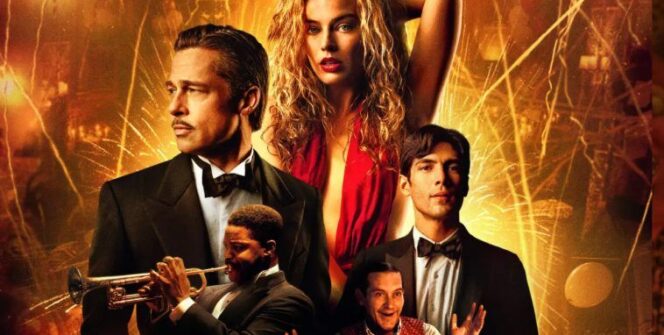
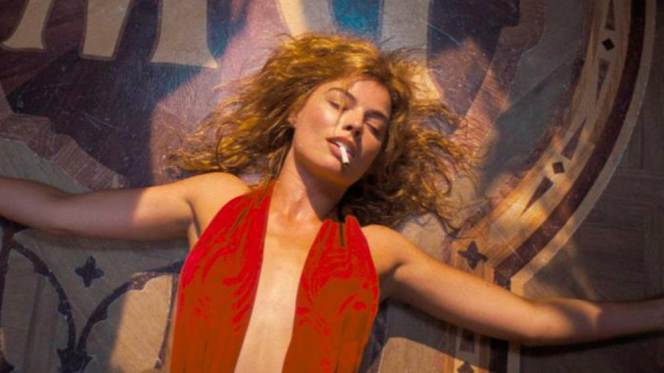
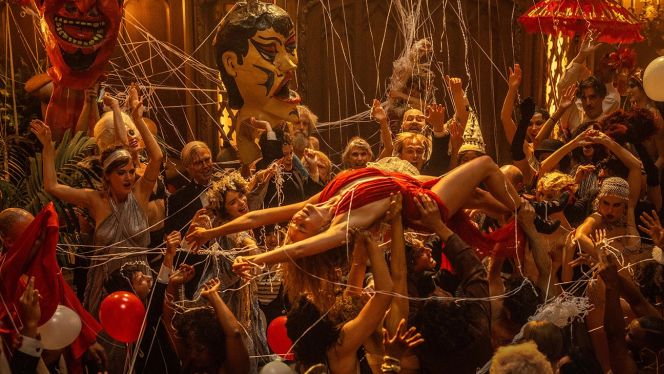
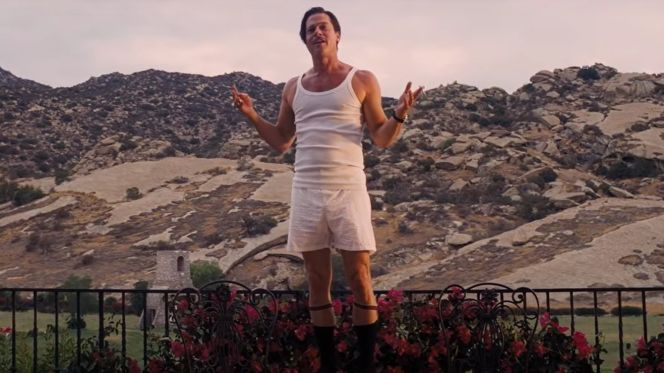
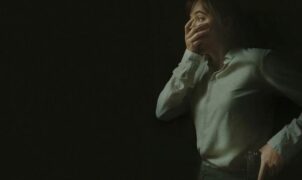
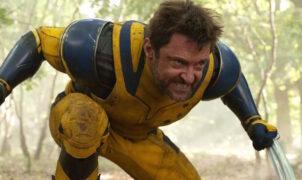
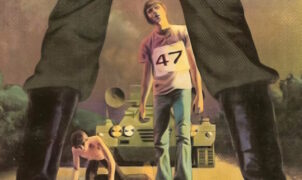

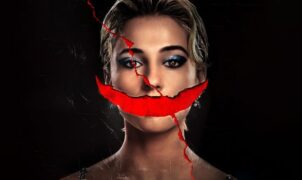
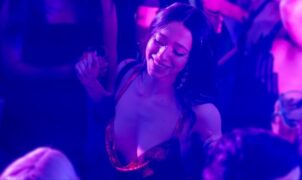
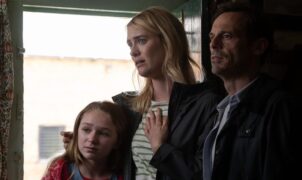
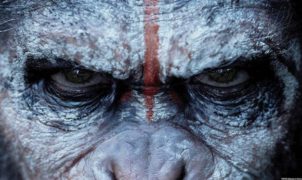
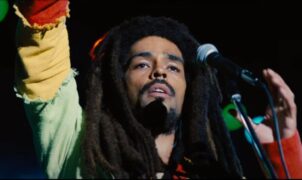
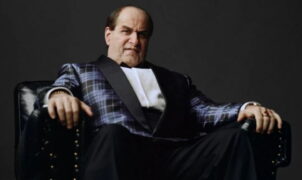




Leave a Reply